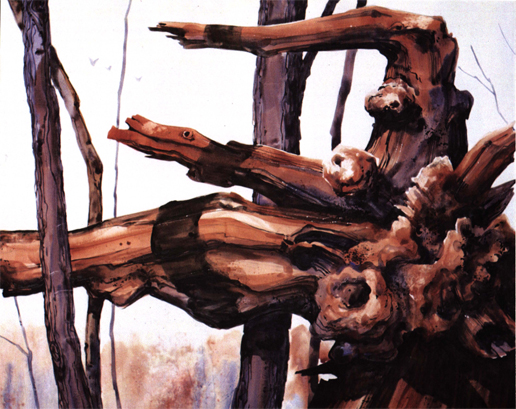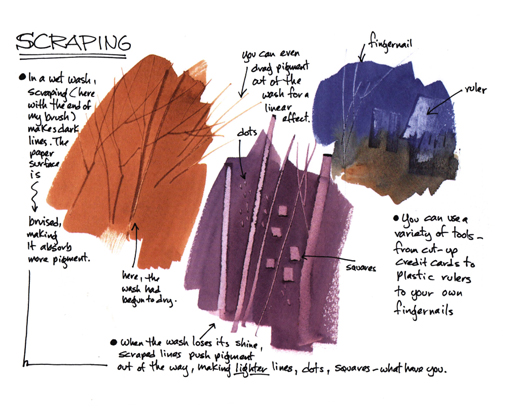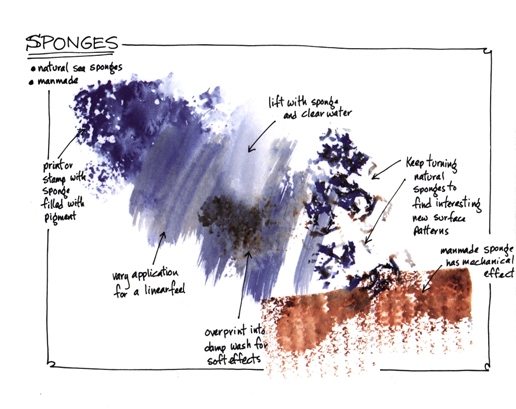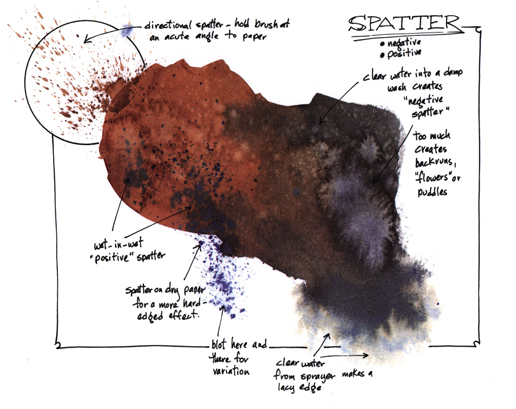
Uprooted II 22" × 30"

Uprooted II 22" × 30"
There are any number of ways to manipulate pigments on your paper—plastic wrap or waxed paper impressed into damp pigment, stamping, finger painting, inks, Maskoid and rubbing alcohol, to name just a few. Here, I've narrowed the field to what I call the four S's—four simple ways to achieve big effects.
Salt can be tricky to use. If your wash is too wet, it is uncontrollable, too dry and there's no effect at all. But it can be an effective tool to suggest starry skies, the sparkle of snow, a sandy beach—or just an interesting texture. It has been somewhat overused in the past—try it with caution and restraint.
Scraping can let you achieve textures difficult to master in any other way; it's controllable but spontaneous. Depending on how wet your wash is and how you hold your scraping tool, you can make dark, fine lines in a wet wash or push the pigment from a damp one to reclaim lights. Held almost at a right angle, the scraping tool bruises the wet paper fibers, making them accept more pigment and resulting in dark lines; at a more acute angle, close to the paper, the tool produces lights in a wash that has lost its wet shine. A narrow tool makes narrow lines; the broad edge of a spatula or a trimmed credit card will give you broad areas of lighter value.
Sponges are useful for more than mopping up; you can suggest a number of textures by painting directly with them. Natural sea sponges are most useful for this, but a man-made sponge with a bricklike texture may be helpful as well. And of course, lifting color with a clean, damp sponge is easy.
My favorite texturing trick is spatter; I spatter into a wet wash for soft effects, into a dry wash for harder-edged spots. A clear-water spatter can produce a spray of tiny light spots that can stand in for salt, but with a softer effect. A well-aimed spray of fine water droplets at the edge of a wash will break it into a lacy edge. It all depends on what you're after.



